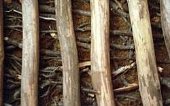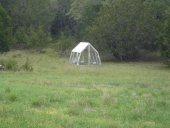




My books, movies, videos, podcasts, events ... the big collection of paul wheaton stuff!




Outdoor and Ecological articles (sporadic Mondays) at http://blog.dxlogan.com/ and my main site is found at http://www.dxlogan.com/





How about cutting and hemming several layers of cotton cheesecloth as a pad between the block and an identically dimensioned cutting board?paul wheaton wrote:I am now thinking that when it is not being used for meaty bits, it should have some sort of cover over it. Probably something that allows airflow, but will keep icky stuff off. Maybe another wood top on top of the wood?










Seed the Mind, Harvest Ideas.
http://farmwhisperer.com




"We're all just walking each other home." -Ram Dass
"Be a lamp, or a lifeboat, or a ladder."-Rumi
"It's all one song!" -Neil Young




How permies.com works
What is a Mother Tree ?




Moderator, Treatment Free Beekeepers group on Facebook.
https://www.facebook.com/groups/treatmentfreebeekeepers/









Success has a Thousand Fathers , Failure is an Orphan
LOOK AT THE " SIMILAR THREADS " BELOW !




My project thread
Agriculture collects solar energy two-dimensionally; but silviculture collects it three dimensionally.









I agree, scratch the 'board above board' ideaMichael Cox wrote:Light and air is what makes wooden chopping surfaces safe for meat

 1
1




Cj Verde wrote:Could we see a pic of the chopping block? It might inspire something like store it on its side so there's barely a surface to put anything on.


How permies.com works
What is a Mother Tree ?





 )
)




Moderator, Treatment Free Beekeepers group on Facebook.
https://www.facebook.com/groups/treatmentfreebeekeepers/









Burra Maluca wrote:
Cj Verde wrote:Could we see a pic of the chopping block? It might inspire something like store it on its side so there's barely a surface to put anything on.

My project thread
Agriculture collects solar energy two-dimensionally; but silviculture collects it three dimensionally.










 $.02
$.02  Big AL
Big ALSuccess has a Thousand Fathers , Failure is an Orphan
LOOK AT THE " SIMILAR THREADS " BELOW !




Moderator, Treatment Free Beekeepers group on Facebook.
https://www.facebook.com/groups/treatmentfreebeekeepers/





 1
1






Moderator, Treatment Free Beekeepers group on Facebook.
https://www.facebook.com/groups/treatmentfreebeekeepers/









My project thread: http://www.permies.com/t/20399/projects/Maine-Master-Plan






 1
1




Success has a Thousand Fathers , Failure is an Orphan
LOOK AT THE " SIMILAR THREADS " BELOW !




"You may never know what results come of your action, but if you do nothing there will be no result”
How Permies.com Works
Be Nice





The non meat-eaters I know aren't too fussy about their food being prepared on the same board as meat has beenMichael Cox wrote:Why not just keep it in a food preparation-only area? (...)I suspect that you will be butchering animals once every few weeks/months at most for your own use, so why not clean it up and use it as a normal food prep area. Provided it is cleaned, dries properly and has time to air it should be sterile enough to use within 48 hours of butchering
 1
1








My books, movies, videos, podcasts, events ... the big collection of paul wheaton stuff!




![Filename: butcher-block.jpg
Description: [Thumbnail for butcher-block.jpg]](/t/39759/a/25033/butcher-block.jpg)
Scott H.
Check out my house project!

|
Hey, I'm supposed to be the guide! Wait up! No fair! You have the tiny ad!
A rocket mass heater is the most sustainable way to heat a conventional home
http://woodheat.net
|








